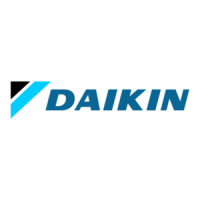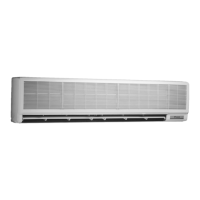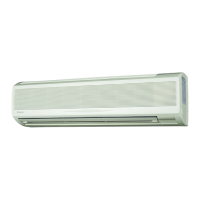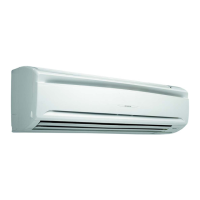ESIE15-13B Troubleshooting by Remote Controller
Service Diagnosis 193
Check for Excessive Refrigerant Charging
As criteria for judging whether refrigerant is excessively charged or not, refer to the following operating
conditions.
<Diagnosis of excessive refrigerant charging>
In cooling operation
(1) Because high pressure rises due to excessive charging, overload control is carried out and capacity tends
to run short.
(2) Considering pressure load, compressor discharge pipe temperature is low.
(3) Subcooled degree of condensate liquid becomes large. Therefore, temperature of blown air passing
through subcooled part decreases in heating operation.
*3 This measured temperature is used to calculate the equivalent saturation pressure of the
refrigerant.
(Refer to P.200.)
Cooling Heating
*1
High Pressure
Intermediate heat
exchanger
thermistor (*3)
*1
High Pressure
Pressure sensor
*2
Low Pressure
Pressure sensor *2
Low Pressure
Intermediate heat
exchanger
thermistor (*3)
Cooling
Adequate level
Compressor frequency
increases in order to
maintain low pressure.
Compressor frequency
decreases in order to
maintain high pressure.
Maximum frequency
Suction superheat degree is approx. 0 deg.
(Degree of excessive refrigerant charging)
As compressor frequency
decreases, low pressure rises.
As compressor frequency
decreases, low pressure rises.
Compressor frequency
decreases due to high
pressure protection control
Minimum frequency
Minimum frequency
Electronic expansion valve
opening degree decreases
due to wet protection control
Electronic expansion valve
opening degree decreases
due to wet protection control
Minimum opening degree
Excessive charge
Adequate level
Suction superheat degree is approx. 0 deg.
(Degree of excessive refrigerant charging)
Minimum opening degree
Excessive charge
Heating
Electronic
expansion valve
Compressor
frequency
Low pressure
(∗2)
High pressure
(∗1)
Suction
superheat degree
Discharge
superheat degree
High pressure
(∗1)
Low pressure
(∗2)
Compressor
frequency
Electronic
expansion valve
Suction
superheat degree
Discharge
superheat degree

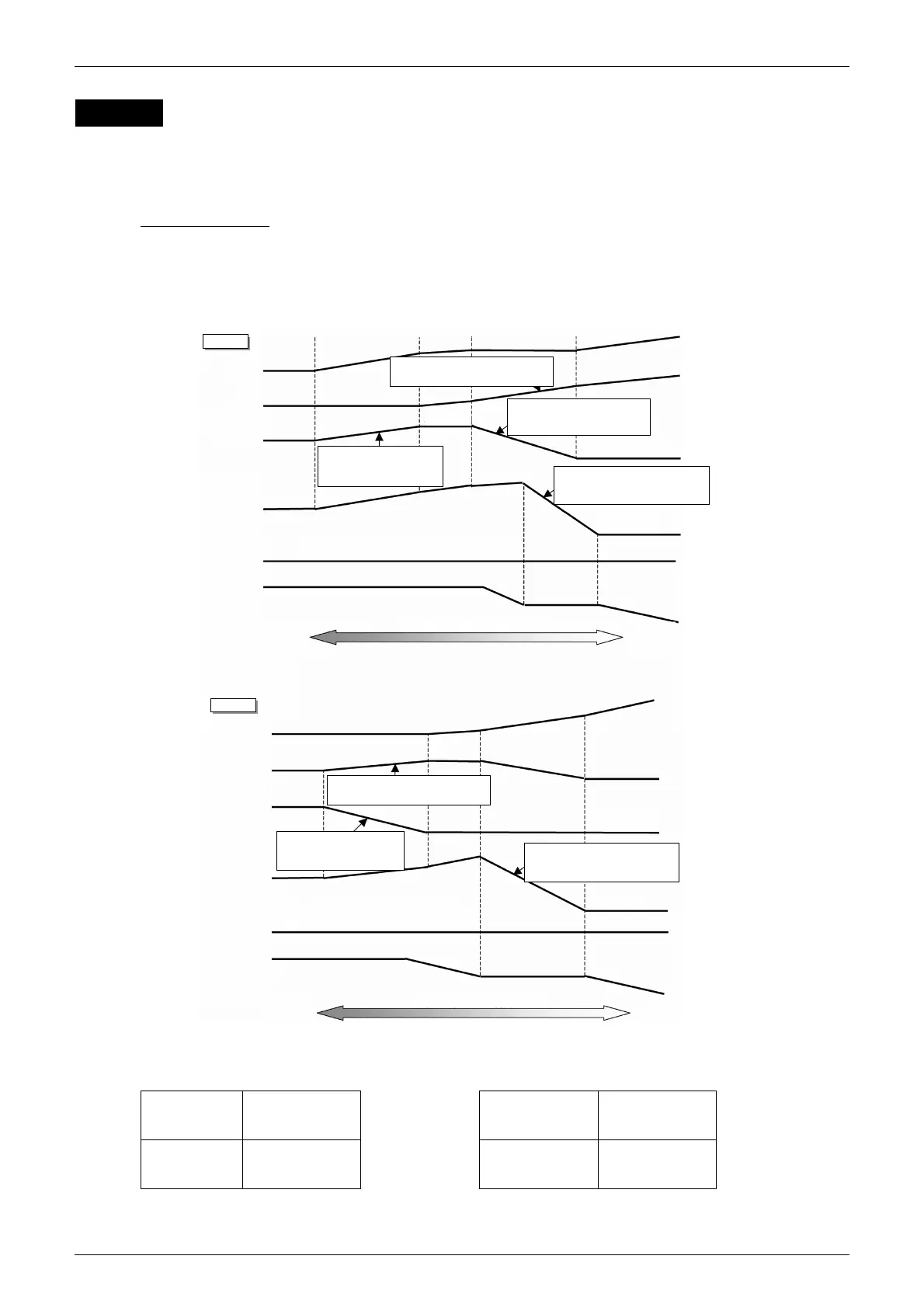